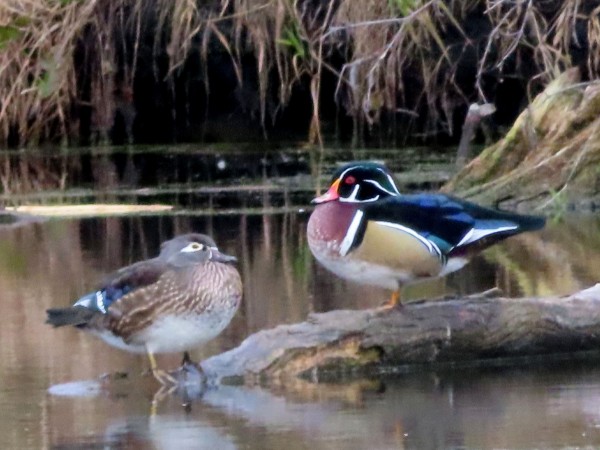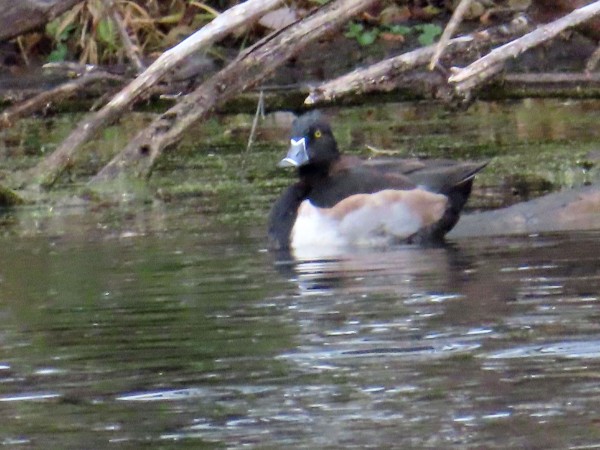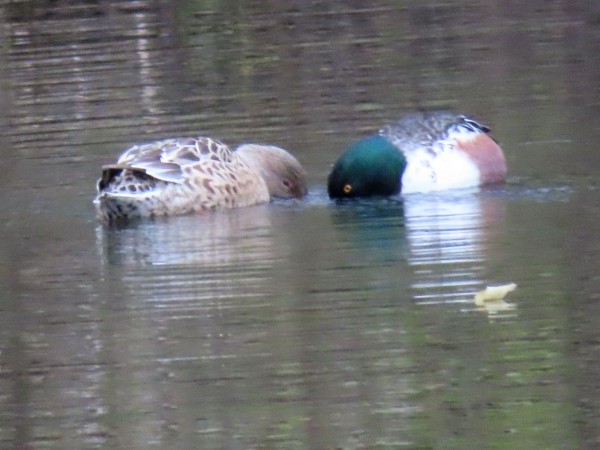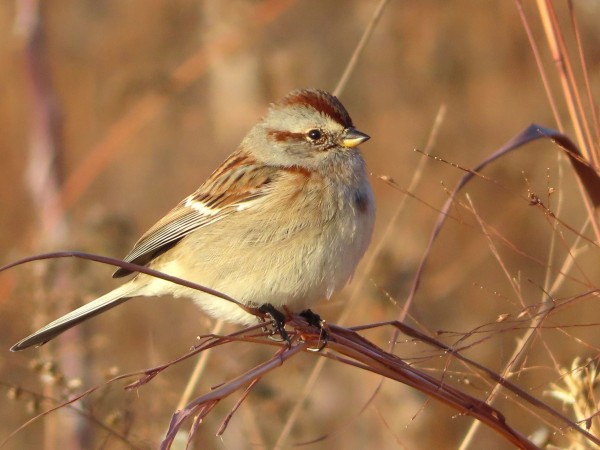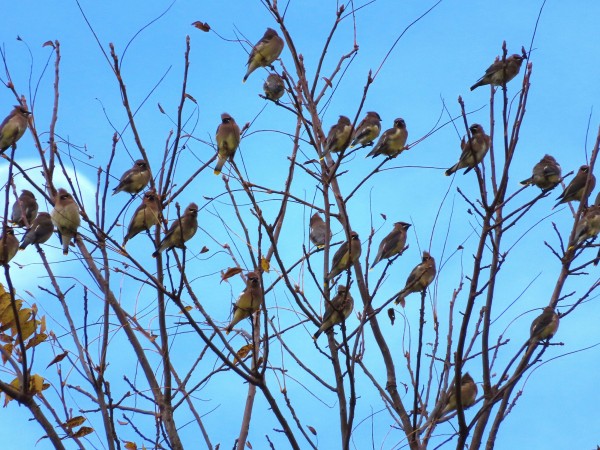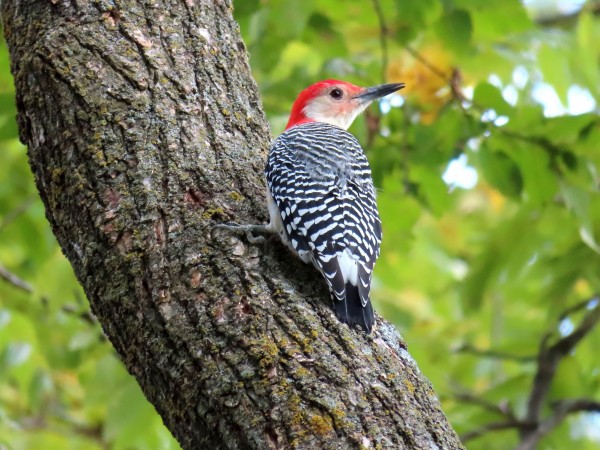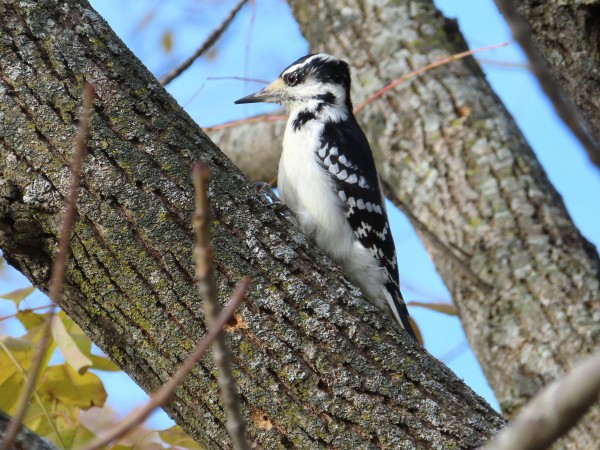Chuck's Birding Report #87
09 November - 16 November 2021
Dear fellow flock of birders,
How did you like the one inch of snow that fell last Saturday night? That was just nature’s way of easing us into winter. Stay tuned, there’s more of that white stuff to come! On my walk in the Arb this morning it was only 27 degrees but it didn’t feel that cold because there was no wind.
More and more trees are losing their leaves. That’s another sign that winter is on its way. In addition while birding today I came across many of the puddles that were covered by a thin layer of ice. Teal Pond was also mostly covered by a thin skim of ice. At the south end of Teal Pond there were still 14 Mallards in a bit of open water.
Today, when I birded the ponds and waterways at the south end of Gardner Marsh along Carver St. I found that they had a thin skim of ice over about half of the water. The ice was primarily extending from the edges toward the middle. What did that do to the waterfowl? Practically all the ducks as well as one Canada Goose were pushed to the west end of the pond where there was still some open water. The ducks consisted of many Mallards with a few Gadwalls and Northern Shovelers mixed in. Most surprising to me was that there were no Wood Ducks. Looking back at my records in my little notebook I saw 40 Wood Ducks on September 16th and from that date one the numbers kept falling. On November 13th, two days ago, I saw 5 when the pond had no ice. A photo of a male and female that I saw that day is included. Today with some ice the Wood Ducks were gone. They probably got the hint and started migrating south.
I also saw a Ring-necked Duck on the 13th. Its plumage is a bit mixed between an immature and an adult so probably is not done molting into its adult plumage yet. A photo of the Ring-necked Duck is included.
At the west end of the waterway along Carver St. I found a pair of Northern Shovelers, a male and a female, swimming around in circles as if chasing each other’s tails. While circling they had their beaks in and partially under the water. I’ve seen this bizarre behavior before and always wondered why they did it. I watched them circle continuously for 10 minutes without stopping. I suspect it’s some sort of feeding behavior. Maybe by circling they create a small whirlpool that helps bring up food from the bottom in this shallow water. A photo the male and female Northern Shovelers in the midst of circling is included. You have to imagine the circling yourself.
I’m sure lots of lakes up north are either beginning to freeze over or have already frozen over. That will bring many more waterfowl to Dane County. I’ve been looking for arriving Tundra Swans but haven’t seen any yet.
I started to make a list of birds that I have not seen in quite some time. See if you can make a list too. You then realize that many have either passed through or the ones that have been with us all summer are gone. I miss all the Gray Catbirds that meowed at me in the parking lot. I miss all the warblers that passed through as well as the Yellow Warblers, Common Yellowthroats and American Redstarts that nested here in the Arb this past spring and summer. I miss all the tiny Ruby-throated Hummingbirds especially the males that stood watch at the top of small trees to protect their territory. Remember too the Barn Swallows that nested under the eaves on the south side of the Visitor Center and flew out every morning to catch insects over Curtis Prairie. I’m sure there are many I’m forgetting. How does my list compare with yours?
Okay, what birds am I seeing? Last Tuesday our single group saw two Golden-crowned Kinglets. I thought they were gone but there can be some late migraters. They not only showed their golden yellow feathers in their crown but also, when opened up even more, one of them showed its central orange feathers. Included is a photo of a Golden-crowned Kinglet with both yellow and central orange feathers showing.
There are lots of Dark-eyed Juncos all over the Arboretum. Sometimes I’m not in the right place and I don’t see any while at other times I’ve seen as many as 30 in one day. They are winter birds.
Another winter bird is the American Tree Sparrow. They are often on Curtis Prairie. They can feed on the trails but I really love watching them when they feed on the tall grasses. They often grab the stems and sidestep to move to the tips where the seeds are. Doing so bends the grass way over toward the ground. When they reach the seeds they eat them. Included is a photo of an American Tree Sparrow perched on the stem of a tall grass.
For the past 2-3 weeks we’ve been seeing large flocks of about 50 or so Cedar Waxwings flying around the Pinetum. Sometimes they stop to eat Juniper berries, one of their favorites. They occasionally just perch in a deciduous tree and rest or preen. Included is a photo of 27 Cedar Waxwings just resting in a deciduous tree.
Last week I showed you a photo of a Red-bellied Woodpecker eating berries from the Asian Bittersweet vines. This week I’ve included a photo of another Red-bellied Woodpecker showing primarily the side of its head and its upperside. The upperside shows its beautiful black and white pattern. The side of its face shows the red crest extending all the way from the back of its neck to its beak identifying it as a male. I must have embarrassed it when I took his photo. Look how red the side of his face is.
Another woodpecker that I see sometimes is the Hairy Woodpecker. It is a bit larger than the Downy Woodpecker but seen in isolation that difference is not very obvious. The best way to tell them apart is to look at the length of the beak and compare that length to the head from front to back. The beak of the Hairy is about as long as the head is from front to back. The beak of the Downy is shorter so from front to back of the head requires about 2 beak’s worth.
That’s the bird report for the past week.
Good health to all of you and good birding too,
Chuck

